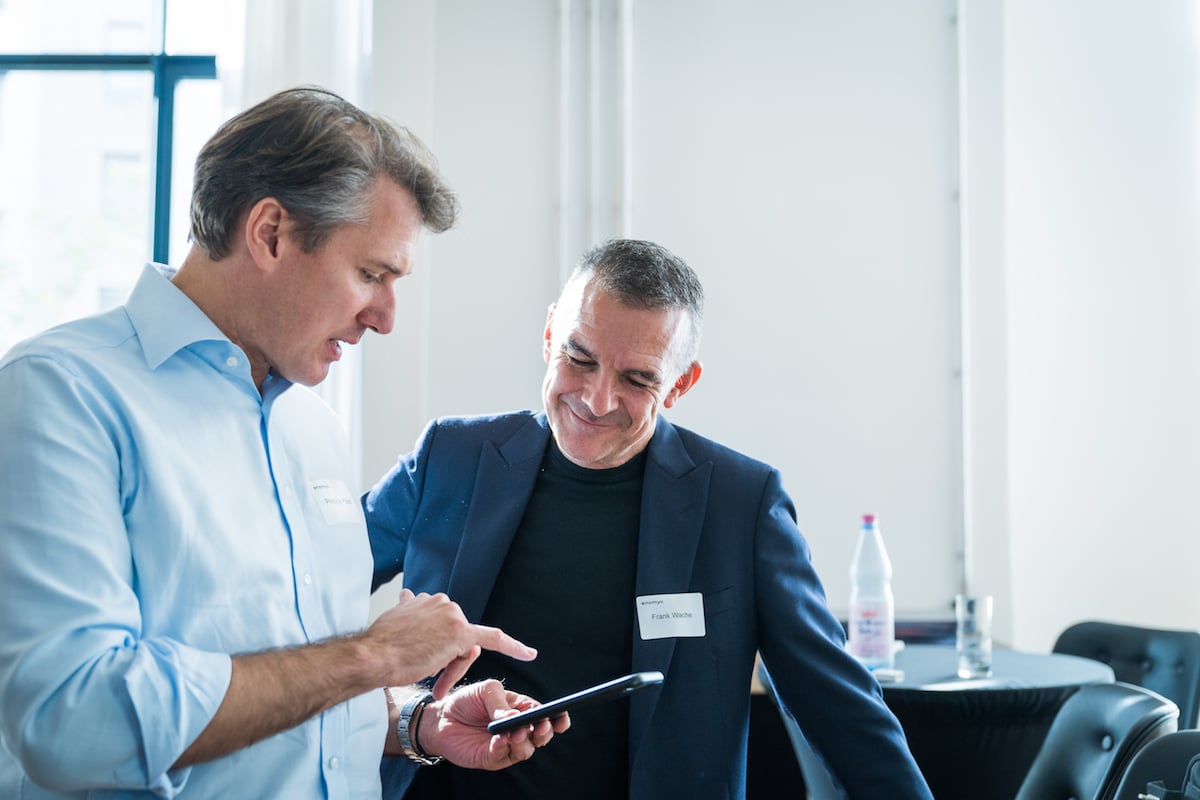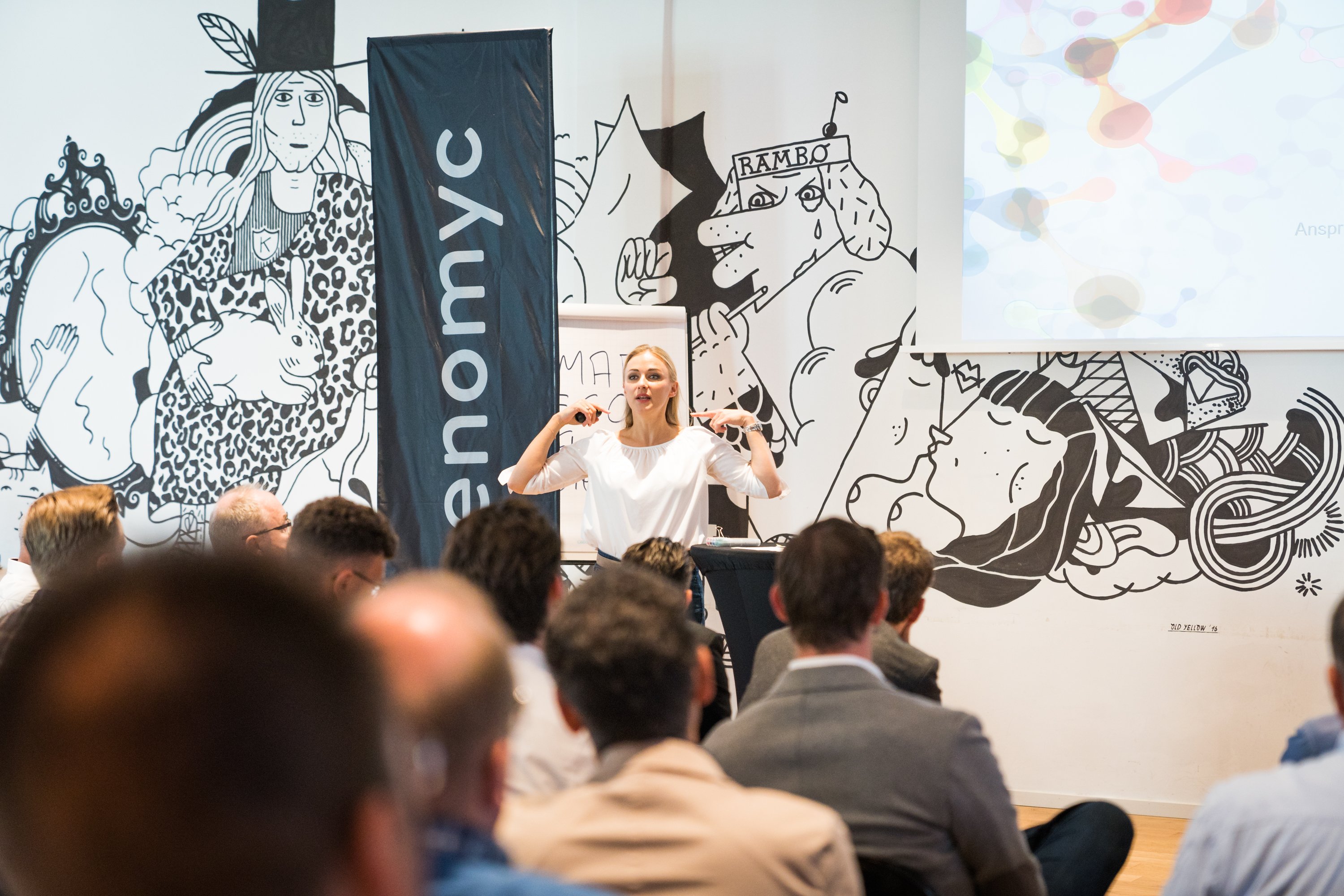Ms. Hammer, you are a change agent and director at enomyc, developing marketing, human resources and other areas within the company. When you joined the company, did you already think: 'Something has to change here'?
Yes. That was also my task and the company's goal from the outset. On the one hand, it was a challenge, and on the other, the company needed the change.
Why?
enomyc is a very successful company that never changed its external image in the past and deliberately did not present itself to the outside world. They always wanted to "fly under the radar".
One could argue: If it went so well, why change it?
Because as consultants, we in particular always recognize a little earlier through our research how the markets are developing. Our experience also shows that you always have to be well prepared for market changes. As a consulting company, we also want to set an example. That's why we have consciously opened ourselves up to digital transformation and cultural change. We have tested, gained experience and expanded our expertise in order to be able to provide authentic advice to other companies.
What was the first step towards digitization at enomyc?
We started by reviewing ourselves. This was a very extensive process. We put together a team of specialists from our own company and supplemented it with additional external digital experts. This enabled us to put all processes and tools to the test from the ground up.
What was a guiding question of this analysis?
"Which processes cannot currently withstand our planned growth?" In fact, we discovered that we had numerous manual and people-dependent processes. All of this was put on the tableau and we examined which digital tools and which competencies we needed instead.
Which areas were digitized at enomyc?
It once went right across the company - from the ERP and CRM system to our financial planning tool to media technology in conference situations - I could name umpteen examples here where we have specifically digitized. Even our marketing is supported by a digital solution.
How do companies you advise benefit from the digitization and rebranding of their own brand??
Because we have had this experience ourselves, we are a trustworthy contact partner. You notice that in the first second: We know what we are talking about. We have experienced it ourselves! We know the stumbling blocks. We know which topics and which project areas require more attention. Take the topics of corporate culture and change, for example: they are also related to rebranding. So how can all the related measures really be implemented? And what does the whole thing cost? Yes, the costs are also often underestimated. Here, too, we can of course make some recommendations based on our own experience.
 In your experience, are companies open to digitization or do they primarily act out of pressure to adapt?
In your experience, are companies open to digitization or do they primarily act out of pressure to adapt?
There is a small proportion of SMEs that are open and proactive in their approach. This often has to do with cross-generational changes or with the fact that new competencies enrich the company. Many other companies, however, only set out on their journey when they sense that they are experiencing sales difficulties, product quality is weakening and they are no longer generating returns.
What are the biggest challenges for SMEs in the digitization process?
In short: time, money and competencies. Many stand on the threshold with the knowledge that they have to do something, but are not familiar with the products and processes of digitization. It's hard for them to imagine what digitalization will bring them in terms of ROI. But they know one thing for sure: that digitization will cost them money. And that is also a fact: you have to be able to afford digitization.
What are typical pitfalls in the digitization process?
It is not uncommon for companies that embrace digitization and implement an ERP system, for example, to get into serious trouble. Exorbitantly high sums in the millions are spent on digitization products that were not planned for and with which they are not at all familiar - which brings me to the next point:
The personnel situation can also bring challenges: Confronting an evolved personnel structure with the implementation of new processes and new software can lead to excessive demands and defensiveness among the workforce - including management, which is unable to detach itself from the existing processes.
Companies need time to get their employees used to digitization, to break down initial blocking, to promote the simplification of processes, and to get the workforce excited about automated processes.
When you think about the transformation process of enomyc: What were some hurdles?
The first hurdle consisted of one question: What's the point at all? We wanted to define as clearly as possible the goals we were heading for in the future - but not just sales and return targets, but also goals relating to the culture, structures and strategic direction of the company.
The analysis process inevitably revealed what was not running optimally. It became apparent that while there was absolute support for streamlining processes, in practice people were stuck with old habits. There were also warnings and concerns from the team - fortunately! We took this feedback and used it, because internal question marks often coincide with external perceptions. So we were well prepared.
How does enomyc help other companies master the challenges in the digitization process?
We don't do digitization because it's fancy or because we think it might work. We stand for profitable solutions and for making sure that the numbers add up. That's why we also look for solutions that give our clients the added value they need.
Which individual steps were primarily part of the enomyc rebranding process?
First and foremost, of course, there is an objective analysis. You have to know exactly where you are starting from before you can start working on the strategy. We really enjoyed the strategy work - I think I speak for all the shareholders here! We were able to put ourselves in the shoes of our new brand, our target customers, and our target market. We had a crystal-clear vision of where we wanted to go. Only then can you start with the creation. We were supported by a branding agency that worked very closely with us.
In the course of digitization and rebranding, the brand identity was completely changed: K & H Business Partner" became "enomyc". Why?
Right. We ended by asking ourselves, "If we adjust our strategic direction, implement new tools, and expand our expertise, are we still the brand we are now? Does that still fit with K & H Business Partner?" And the answer was "no." The design was not the beginning of the change: it was the crowning achievement.
From idea generation to launch on February 1, 2019: How long did the rebranding process take overall?
We set ourselves a target of two years from the preliminary work to the launch - and we were able to keep to it. That may sound like a bit much, but it's not. You definitely need these two years if you want it to be good. Experience has shown that everything else you do is made with a hot needle.
How does it feel to part with an established brand name and adopt a new one?
Interestingly enough, that wasn't difficult at all. When we postponed the go-live date once, the first colleagues came and asked when it would finally be ready! That was a gauge: we were ready! Today, it feels like we've been enomyc forever. The company has continued to grow in value. And also in security.
To get the essence out of a change process, you can ask yourself: Would you want to go back? If the answer is a clear 'no', then you know that it was a courageous and absolutely right step.
What are the reactions?
Very good! So far, interestingly, no one has mispronounced our name. With the old company name we experienced this very often: Sometimes we were "K and H", sometimes "Köstens and Hammer", sometimes "Business Partner" or "Business Partners". How did you manage the change in terms of communication?
How did you manage the change in terms of communication?
Let's start with internal communication, because I think that's the most important thing: getting the entire team on board right from the start is the prerequisite for a company to live the new brand identity internally, but also to convey it to the outside world with crystal clarity and conviction. And to do so with a certain charisma and energy - also with pride and fun in the new look.
We had put together an internal committee from different departments. Everyone was invited to participate. There were regular updates on the status quo so that everyone also knew what was currently being developed, how, for what purpose and why it made sense. That was good and it was also important.
We started external communication four months before go-live. We personally invited our most important contacts to our roadshow via mailing and e-mail - but only with the information that something would change dramatically. That made the excitement rise! We revealed the secret in person - which was also hugely important to us - at our roadshow in mid-January 2019 - the last two weeks before go-live. On February 1, 2019, we also sent out a big cover letter with our material to all our contacts. At the same time, our website went live with an image film that educated on the rebranding. We additionally launched our newsletter and blog, which you are also reading right now.
Finally, what advice would you like to share with companies planning to rebrand?
To create a brand that is absolutely authentic. Not artificial, but a brand that really reflects who you are. If that can be felt, then the brand will work. I also advise you to keep at it successively, to bring the team along with you from the start and to always keep the goal in mind.
Today we celebrate 1 year of enomyc. Thank you all for joining us in this groundbreaking step!


